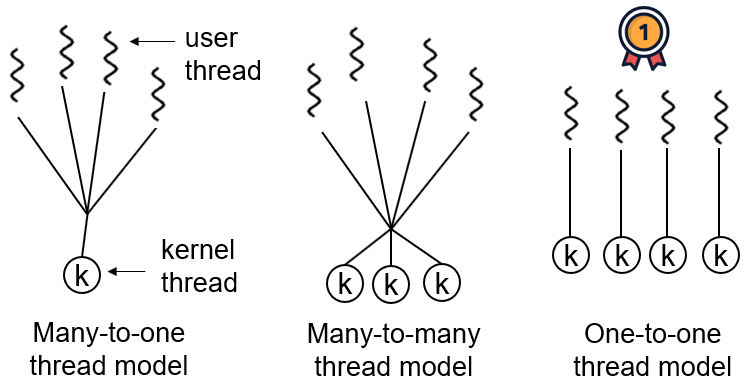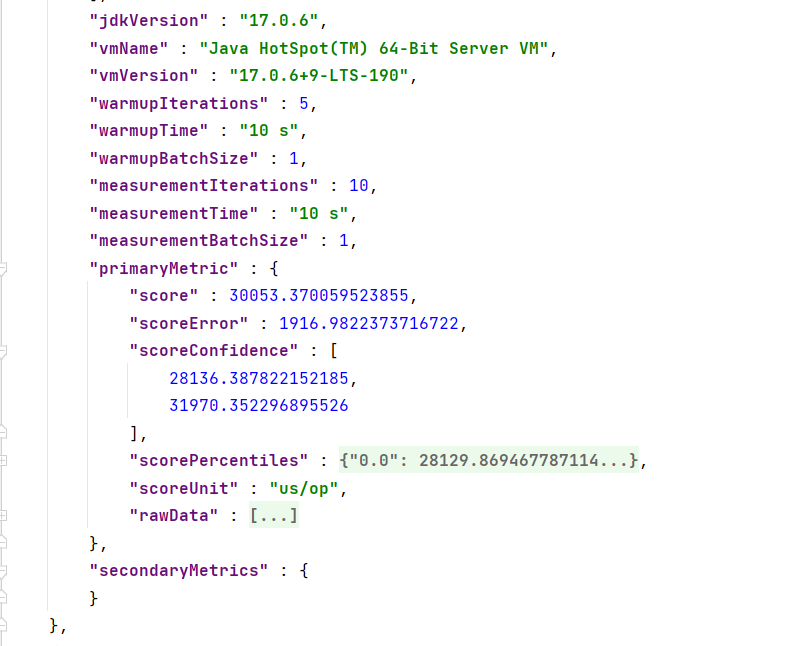Spring AOP-面向切面编程
Spring-AOP
1、AOP 基本概念
(1)面向切面编程(方面),利用 AOP 可以对业务逻辑的各个部分进行隔离,从而使得业务逻辑各部分之间的耦合度降低,提高程序的可重用性,同时提高了开发的效率。
(2)通俗描述:不通过修改源代码方式,在主干功能里面添加新功能
(3)使用登录例子说明 AOP

2、AOP底层原理
a)AOP 底层使用动态代理 ,动态代理有两种情况:
第一种 有接口情况,使用 JDK 动态代理 ;创建接口实现类代理对象,增强类的方法

第二种 没有接口情况,使用 CGLIB 动态代理;创建子类的代理对象,增强类的方法

3、JDK 动态代理
java.lang.Proxy
1)使用 Proxy 类里面的方法创建代理对象
调用 newProxyInstance 方法,方法有三个参数:
1 | public static Object newProxyInstance(ClassLoader loader, |
- 方法的参数说明
ClassLoader loader:类加载器Class<?>[] interfaces:增强方法所在的类实现的接口,支持多个接口- 比如
Class[] interfaces = {UserDao.class};
- 比如
InvocationHandler h:实现这个接口 InvocationHandler,创建代理对象,写增强的部分
2)编写 JDK 动态代理代码
-
创建接口,定义方法
1
2
3
4public interface UserDao {
public int add(int a,int b);
public String update(String id);
} -
创建接口实现类,实现方法
1
2
3
4
5
6
7
8
9
10public class UserDaoImpl implements UserDao {
public int add(int a, int b) {
return a+b;
}
public String update(String id) {
return id;
}
} -
使用 Proxy 类创建接口代理对象
==JDKProxy.java==
-
代理的是谁,就把那个类的对象传过来 :
1
2
3
4private Object obj;
public UserDaoProxy(Object obj) {
this.obj = obj;
} -
然后执行增强的方法 ( 里面会执行 被增强的方法)
-
‘使用Proxy类的 new ProxyInstance 创建接口实现类的代理对象
(UserDao)Proxy.newProxyInstance(JDKProxy.class.getClassLoader(), interfaces,new UserDaoProxy(userDao));1
2
3
4
5
6
7
8
9
10
11
12
13
14
15
16
17
18
19
20
21
22
23
24
25
26
27
28
29
30
31
32public class JDKProxy {
public static void main(String[] args) {
//创建接口实现类代理对象
Class[] interfaces = {UserDao.class};
UserDaoImpl userDaoImpl = new UserDaoImpl();
/** 类加载器 ,增强方法所在的类,这个类实现的接口,(支持多个接口)实现这个接口 InvocationHandler,创建代理对象,写增强的部分 */
UserDao userDao =(UserDao)Proxy.newProxyInstance(JDKProxy.class.getClassLoader(), interfaces,new UserDaoProxy(userDao));
int result = dao.add(1, 2);
System.out.println("result:"+result);
}
}
//创建代理对象代码
class UserDaoProxy implements InvocationHandler {
//1 把创建的是谁的代理对象,把谁传递过来
//有参数构造传递
private Object obj;
public UserDaoProxy(Object obj) {
this.obj = obj;
}
//在incoke内写增强的逻辑
public Object invoke(Object proxy, Method method, Object[] args) throws Throwable {
//方法之前aa
System.out.println("方法之前执行 "+method.getName()+" : 传递的参数"+ Arrays.toString(args));
//被增强的方法执行
Object res = method.invoke(obj, args); // 当前方法的返回值
//方法之后
System.out.println("方法之后执行...."+obj);
return res;
}
} -
4、AOP操作术语
-
连接点:类里面哪些方法可以被增强,这些方法称为连接点
-
切 入点:实际被真正增强的方法称为切入点
-
通知(增强):实际增强的逻辑部分称为通知,且分为以下五种类型:
-
前置通知:在我们执行目标方法之前运行(@Before)
后置通知:在我们目标方法运行结束之后,不管有没有异常(@After)
返回通知:在我们的目标方法正常返回值后运行(@AfterReturning)
异常通知:在我们的目标方法出现异常后运行(@AfterThrowing)
环绕通知:目标方法的调用由环绕通知决定,即你可以决定是否调用目标方法,
joinPoint.procced()就是执行目标方法的代码 。环绕通知可以控制返回对象(@Around)
-
-
切面:把通知应用到切入点过程
@After 与@AfterReturning 的区别 : @After 即便抛出了异常 依然后执行 ,@AfterReturning如果运行过程中抛出了异常就不会执行
如果运行过程中 出现了异常, @Around 的 第二次环绕不会执行
5、AOP操作
-
Spring 框架一般都是基于 AspectJ 实现 AOP 操作,AspectJ 不是 Spring 组成部分,独立 AOP 框架,一般把AspectJ 和 Spirng 框架一起使 用,进行 AOP 操作
-
基于 ==AspectJ== 实现 AOP 操作:
1)基于 xml 配置文件实现
2)基于注解方式实现(使用)
-
引入相关jar包
-
切入点表达式,如下:
-
切入点表达式作用:知道对哪个类里面的哪个方法进行增强
-
语法结构: execution([权限修饰符] [返回类型] [类全路径] [ 方法名称] ([参数列表]) )
-
例子如下:
-
例 1:对 com.atguigu.dao.BookDao 类里面的 add 进行增强
execution(* com.atguigu.dao.BookDao.add(..)) -
例 2:对 com.atguigu.dao.BookDao 类里面的所有的方法进行增强
execution(* com.atguigu.dao.BookDao.* (..)) -
例 3:对 com.atguigu.dao 包里面所有类,类里面所有方法进行增强
execution(* com.atguigu.dao.*.* (..)) -
例4 :对comatguigu.BookDao 类里面的 private的方法进行增强
execution(private com.atguigu.BookDao.*(..))
-
-
6、AOP 操作:@AspectJ
1)创建类,在类里面定义方法
1 | public class User { |
2)创建增强类(编写增强逻辑)
(1)在增强类里面,创建方法,让不同方法代表不同通知类型
1 | //增强的类 |
3)进行通知的配置
(1)在spring配置文件中, 开启注解扫描
1 |
|
(2)使用注解创建User, UserProxy
(3)在增强类上面添加注解@Aspect


(4)在Spring配置文件中开启生成代理对象
<aop:aspectj-autoproxy/>
4)配置不同类型的通知
- 在增强类的里面,在作为通知方法上面添加通知类型的注解,使用切入点表达式配置
使用的注解:
UserProxy.java
1 |
|
使用了@Pointcut(value="execution(* com.atguigu.spring5.aopanno.User.add(..))")
1 |
|
后面的通知 的注解里面的value 可以直接写成 (value=“pointDemo()”)
例如:
1 | // 第一个 * 表示的是所有的 访问权限类型 |
作用: 抽取相同的切入点
5 )运行结果
-
有异常:
1
2
3
4环绕之前
before
after
After throwing Exception -
没有异常
1
2
3
4
5
6环绕之前
before
User method: add
环绕之后
after
after
6)多个增强类的情况 :@Order
强调:@Order、Ordered不影响类的加载顺序而是影响Bean加载如IOC容器之后执行的顺序(优先级);
- 有多个增强类对同一个方法进行增强,==设置增强类优先级==
- 使用
@Order(number)注解设置优先级 ,数字越小 优先级越高,
- 使用
1 | //(1)在增强类上面添加注解 @Order(数字类型值),数字类型值越小优先级越高 |
7、AOP 操作(AspectJ 配置文件)
1 |
|
8、 完全注解开发
1.创建配置类
- 不需要配置xml配置文件
1 |
|










